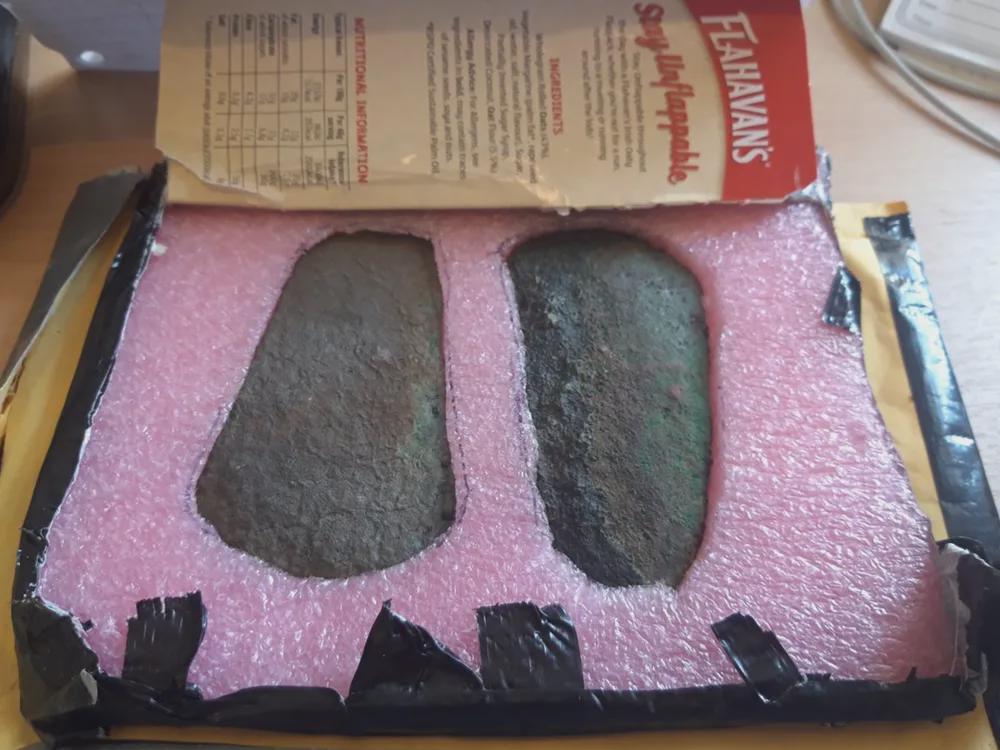The National Museum of Ireland (NMI) received an unexpected and remarkable package last month containing a pair of early Bronze Age axe heads believed to be over 4,000 years old. These artifacts, hailed as “significant” by museum experts, offer a rare glimpse into Ireland’s distant past.
The axe heads were thoughtfully packaged inside a cardboard box originally meant for breakfast foods, with foam padding cut to their exact shapes. Alongside the artifacts was a letter from the sender, who mentioned that the items were discovered using a metal detector in the Westmeath area in central Ireland. However, the letter provided little additional information.
The Importance Of The Find
The NMI has appealed for the sender to come forward to help further understand the significance of these ancient artifacts. Matt Seaver, the NMI’s assistant keeper of Irish Antiquities, emphasized the importance of knowing the exact location where the axe heads were found. “We are thrilled about the discovery of these Early Bronze Age axe heads, but to truly understand their significance, we need to know where they were found,” Seaver said.
Dating back to approximately 2150 to 2000 BCE, these axe heads were made at the dawn of the Bronze Age, when copper was first smelted before being combined with tin to make bronze. Seaver noted that the “beautiful” axe heads were found together, which is an important detail. He speculated that the metals used to make them might have come from a copper mine in Ross Island, County Kerry.
The Need For Context
Understanding the context of the find is crucial for archeologists. As Seaver explained to RTÉ News, “An object on its own is valuable in one sense, but an object in its context tells us something about where and why these objects were used.” He highlighted that the location of such objects —whether in a bog, a river, or near another monument —provides essential information about their historical and cultural significance.
The museum noted that hoards or collections of objects were often deliberately placed in specific locations for reasons ranging from ritualistic to supernatural. Without knowing the exact find location, much of this contextual information remains a mystery.
A Call For Information
The NMI is keen for the anonymous sender to come forward. Seaver acknowledged that the likely reason for the sender’s anonymity is due to laws restricting the use of metal detectors to search for archaeological objects. However, he assured that no one is in trouble and emphasized that any tops “will be treated with the utmost confidentiality and used solely to verify the find location and its circumstances.”
The discovery of these axe heads has the potential to significantly enhance our understanding of early Bronze Age Ireland. The NMI hopes that the sender or anyone with additional information will help shed light on this important find.
References
National Museum of Ireland: Appeal for information about Bronze Age axeheads found in Westmeath
BBC: Museum Hopes for Information on Ancient Axeheads
RTÉ News: Museum appeals for information on anonymously donated Bronze Age axeheads
Smithsonian Magazine: Someone Anonymously Mailed Two Bronze Age Axes to a Museum in Ireland








